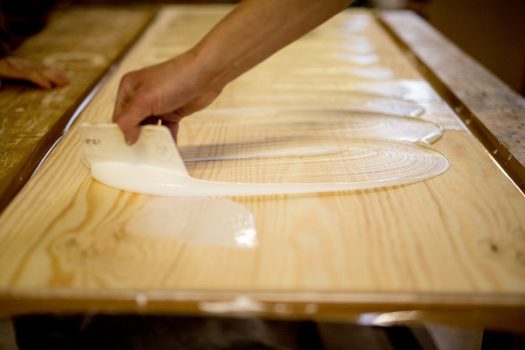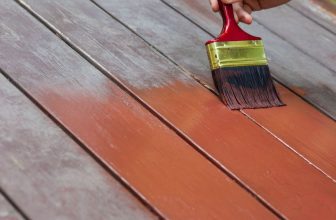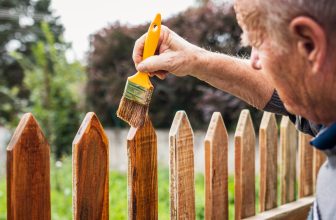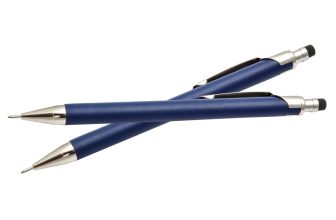Contents
If you need to join two different materials together, we would be surprised if one of the first tools that you reach for isn’t glue.
Glue has been used for decades as a tool to bond different things together, and it is something that we are socialized into using from preschool. So it makes sense that you might be searching for a type of glue that you can use to bond wood to metal.
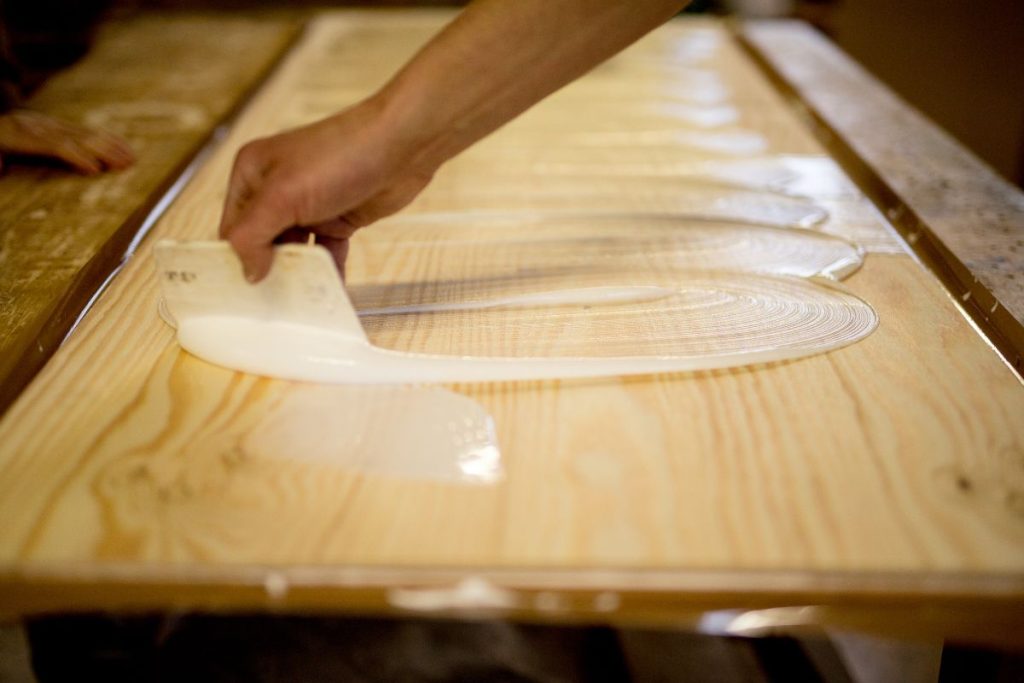
Not all glues will be suitable for attaching wood to metal because the only glue suitable for this job will need to be incredibly strong.
Thankfully, there are quite a few different types of glue that will be suitable for the job. So as long as you choose one of these, you’ll be flying.
In this guide, we’re telling you all about the best glue for wood to metal. Looking at some of the best options on the market, and what to consider when buying wood glue too. So if you want to find out more, keep on reading!
Is Wood Glue Suitable For The Job?
You might expect the huge amount of different glues on the market to make finding a glue suitable for wood and metal to be simple. But in reality, this huge amount of different glues makes finding the right glue for the job pretty difficult.
There are, of course, some types of glues that you can easily discard in the search. A Pritt stick, for example, obviously isn’t going to be able to bond metal to wood and vice versa.
But, certain types of glue, like wood glue, might seem like a good option for the job. But is this the case?
As we said earlier, the only glue that is suitable for the job will be a very tough and hardy glue. Wood and metal are two very different textures, so you will need a polyurethane glue to ensure that the materials actually bond to one another.
Thankfully, quite a lot of glues that are designed for use with wood are specifically made using polyurethane.
For this reason, a lot of the time, wood glue is suitable for bonding wood to metal. So with no further ado, let’s take a look at some of the best glues for bonding wood to metal.
Gorilla Original Gorilla Glue
First up, we have Gorilla Original Gorilla Glue. When it comes to sturdy glues that are guaranteed to bond materials to one another, Gorilla Glue has become one of the most trustworthy. This glue is well-known for being an incredibly strong glue that can be used for a wide variety of different activities.
One of the main reasons why Gorilla Glue has become so popular is because it is incredibly resistant. Unlike some glues that can be affected by solvents and water, Gorilla Glue is able to resist these materials.
Ensuring that even if the wood or metal becomes wet, or covered in a solvent, the Gorilla Glue will not break down, and your wood and metal will remain bonded together.
If you are somebody who regularly completes DIY tasks, then you may be familiar with Gorilla Glue, in fact, you may already have a bottle lying around in the house.
Gorilla Glue is incredibly versatile, suitable for use with stone, foam, metal, wood, concrete, ceramic, glass, and lots more.
It is easier to name the materials that Gorilla Glue cannot be used with, rather than the materials that it can, simply because the list is so great.
Gorilla Original Gorilla Glue would be our first choice for anything that you are building which will be kept outside.
Gorilla Glue is completely waterproof, and it will not break down when exposed to the outdoor elements, such as wind, rain, etc.
You might be wondering how Gorilla Glue is able to be as effective as it is. Gorilla Glue is able to be this effective because it doesn’t simply bond wood and metal at a surface level.
Instead, Gorilla Glue penetrates into each material expanding three times and then bonding when dried. So the wood and metal will not only be bonded on the surface, but at a deeper level too.
With Gorilla Glue being immune to changes in temperature, there are very few DIY tasks that it is not suitable for. It is incredibly user-friendly to use, and we’re certain that once you use it once, you will be able to confidently use it time and time again.
It is an affordable type of glue, and because it is so versatile, you will definitely be able to get your money’s worth out of this glue when you use it.
For wood to metal glue, you really need look no further than Gorilla Glue!
Pros
- Multi-Use – You can use Gorilla Glue for a variety of projects with lots of different materials.
- Easy to Use – This glue is incredibly user-friendly, and you will effortlessly be able to use it by following the instructions.
- Resistant – This glue is not only resistant to water and solvents, but also to temperature changes.
- Suitable for Outdoor Use – You can use this glue for projects that will be kept both indoors and outdoors.
- Affordable – Gorilla Glue is rather cost-effective, especially when you consider the different jobs this glue is suitable for.
Cons
- Difficult to Get Off Your Hands – If you get this on your hands while you are using it, it is incredibly difficult to remove the glue from your hands. The stains will likely remain there for a little while.
Kraken Bond Wow! Super Crazy Glue
The next option that we would recommend using for gluing wood to metal (and vice versa) is Kraken Bond Wow! Super Crazy Glue.
The small size of this bottle can be incredibly mis-leading, and you may think that you won’t be able to complete the task at hand with just one bottle of this glue.
However, that isn’t the case, with this glue, a little goes a long way, let us tell you why.
There are a number of reasons why Kraken Bond Wow! Super Crazy Glue is a great option. As you will guess from its inclusion in this guide, this glue is suitable for gluing wood to metal, and vice versa.
In addition, it is also suitable for use with a wide variety of other materials. These materials include glass (glass, fiberglass, stained glass, tinted glass), brick, stone, rubber, cardboard, pottery, and more.
From the bottle size of Wow! Super Crazy Glue, it is likely that you will expect it to only last you for a single project.
But, due to the strength of this glue, you need only use a very small amount for your project, and the design of the bottle ensures that any waste will be kept to a minimum.
The design of the bottle ensures that the glue will drip out of the bottle slowly, and with just a few drops of this glue, you will be able to easily glue wood to metal.
This glue is able to work so effectively because of the curing process. Immediately, the chemicals in this glue will begin to bond the materials to one another, and you will feel the glue drying very early on.
Unlike with some glues, you will not need to hold the wood and metal to one another for hours while you wait for the glue to dry. Instead, the bond will begin in just minutes, and in a few hours, it will be completely dry.
However, even though the glue dries quickly, it isn’t finished doing its work. For the glue to really achieve its full potential, you should leave the project alone for 24 hours.
During these 24 hours, the glue will completely cure, ensuring that the wood and metal are tightly bonded to one another.
Unlike some other glues, you will not need to use tapes, nails or any other materials to help the glue bond. Instead, the glue will bond entirely on its own.
We have spoken about the size of the bottle of this glue a lot, but we really are certain that you’ll be surprised by the size of it. If you compare the size of the bottle with the cost of the bottle, you will likely think that it is very expensive.
But when you compare the size of the bottle to how little glue you will actually need to use, you’ll quickly realize that this glue is incredibly cost-effective.
This glue may be small, but it is incredibly mighty, and that is what makes it so great!
Pros
- Incredibly User Friendly – This glue is so easy to use, it takes just 20 seconds to set and only 24 hours to cure completely.
- Versatile – Can be used on an incredibly long list of materials, including masonry, glass, cardboard, plastic, pottery, and lots more.
- Stretches a Long Way – You only need to use a few small drops of this glue to connect your different materials together.
- Very Little Mess – This glue produces very little mess due to the design of the bottle, the glue will drip out in small drops that are easy to manage.
- Easy to Store – The small size of this glue bottle ensures that you will easily be able to keep it safe somewhere in your home.
Cons
- Unsuitable on Bumpy Surfaces – If the materials that you are bonding together are not flat, then the glue may struggle to cure, and the bond may be less effective.
Akfix 360FC Fast Drying Polyurethane Glue
Alternatively, you should check out Akfix 360FC Fast Drying Polyurethane Glue. This next glue is rather different to the one that we just looked at, and this is something that you will notice immediately when you see the size of the bottle.
This glue is more expensive than the last one we just looked at, but the amount of glue that you get is definitely worth it.
Akfix is an incredibly strong glue, and that is why it is suitable for bonding wood to metal. The glue itself is designed for use with a wide variety of materials, including both porous and non-porous materials, such as wood, metal, foam, plastic, and lots more.
It can also be used for a variety of different tasks, and this really highlights just how strong this glue is. Especially when you consider the fact that it is used on marine-grade projects.
We’ve spoken about the amount of glue that you get in a bottle of Akfix 360FC and how impressive this is.
However, it is important to note that a huge reason for you receiving so much in a bottle is because you will need to use more of this glue to bond the two materials together.
The glue will be applied using a brush, rather than in a drip-like fashion (like the Kraken Bond Wow! glue), and this will increase the amount of waste that is produced when using the glue.
But, having to use more glue isn’t necessarily a bad thing. You get a lot of glue in this bottle and this accurately reflects the amount of glue that you will use to adhere different materials to one another.
Just like all the other glues that we have looked at so far, this glue will need to cure in order for it to effectively do its job.
While gluing the different materials together will not take very long, it will take around 24 hours for the glue to cure.
In order to cure effectively, the glue will need to be applied in temperatures above 41 degrees Fahrenheit, and that is really the only downfall of this glue. If you use the glue in temperatures below this, then it simply will not cure.
But this small downfall aside, there really are so many things that are great about this glue. It is waterproof, so suitable for use both indoors and outdoors.
In addition, it can also easily be removed from unwanted areas through the use of acetone.
So, you don’t need to worry if you get some glue on your hand, instead you can simply wipe it away with acetone and you’ll be good to go.
This glue is incredibly strong, so no matter the task at hand, it’ll be great for bonding wood to metal.
Pros
- Large Bottle – Excellent value for money as you get a large amount of glue in a single bottle of this product.
- Easy to Apply – Apply this glue with a brush for straight-forward application (but be aware that it may drip!).
- Marine-Grade – Suitable for use with a variety of different materials on lots of different projects, including projects that are designed for marine use.
- Cures in 24 Hours – In just 24 hours, the glue will be completely cured and waterproof.
- Easily Remove Excess Glue – Any excess glue or spilled glue can easily be removed through the use of acetone.
Cons
- Only Cures Above 41 Degrees Fahrenheit – This wood glue is only suitable for use on wood and metal in temperatures above 41 degrees Fahrenheit.
Grizzly Glue Grizzly One
We’ve spoken about Gorilla Glue, now let’s move onto another wood glue company that uses alliteration in their name: Grizzly Glue.
Specifically focusing on their Grizzly One product. Grizzly Glue Grizzly One is an incredibly strong polyurethane adhesive that is absolutely perfect for use on wood and metal.
Grizzly Glue is a fairly well-known brand of glue, and as a result it is also fairly expensive. It comes in a variety of different sizes, with even their smallest bottle being priced rather high for wood to metal glue.
However, while it is expensive, the higher price point is definitely worth it, let us tell you why.
Grizzly One glue is a great glue because it works in environments where some other glues are ineffective. This glue doesn’t need to be used on dry materials, in fact, it can actively be used and left to cure on materials that are wet when the glue is approved.
This is incredibly rare as while many glues are waterproof, they are not waterproof prior to the curing process. So the fact that this glue is really highlights how great it is.
In addition to this, this glue also dries and cures pretty quickly. Within just 35 minutes of being added to the wood or metal, the Grizzly One glue will have dried.
However, for the best results, you should leave the materials clamped together for a further 5 hours. Once these 5 hours have passed, the glue should be completely dry, cured and good to go.
Our favorite thing about this Grizzly Glue is the fact that it is insanely strong. Once this glue has been used to bond materials together, you would need to use an ax (or some other sharp tool) to separate the two. This glue is insanely strong, and you really won’t be able to believe just how strong it is until you use it.
Patience is a virtue with this glue, and that is why it is important to realize that it will not cure immediately. While it has a relatively low bonding time in comparison to some of the other options out there, it may seem like a long time once you see the glue drying immediately.
The surface of this glue will dry quickly, but the full 5 hours is required for this glue to dry completely. This is something that you should bear in mind when using it.
Grizzly One glue is suitable for use with a huge variety of different materials, just like the many other glues that we have looked at so far.
However, the one requirement for this glue to work when bonding two materials together is that at least one of the two materials must be porous.
In the case of bonding wood and metal, this is perfectly fine as wood is porous, so it doesn’t matter that metal is not.
If you love this glue, then you can easily order it in bulk to get more bang for your buck, and ensure you never run out of this glue!
Pros
- Cures Quickly – This glue will cure quickly and be good to go in just under 6 hours once you consider drying and curing time.
- Bonds Any Materials – As long as one of the two materials you are bonding is porous.
- Buy in Bulk – You can buy large amounts of this glue at once to save you money and ensure that you never run out of this glue.
- Suitable for Use in Wet Conditions – Unlike many other glues, this glue can be used on materials that are wet and it will still cure.
- Indoor and Outdoor Use – You can use this glue for both indoor and outdoor projects and it will do the job effectively.
Cons
- Expensive – This glue is a pricier option, so it won’t be suitable for those on a very tight budget (even though this glue is very good).
Loctite Super Glue Ultra Gel Control
Finally, let’s wrap this up with one of the best glues to ever exist. There really is no way that we could make an article about strong glue without including this one, and that is because this really is one of the best glues out there. Period. Of course, we are talking about Loctite Super Glue.
Super Glue is so good that it really has become the benchmark for any type of glue that enters the marker. The strength of superglue has become something that many people compare other glues to.
If it isn’t as glue as superglue, then it isn’t good enough, and that is a fair comparison because of how good Super Glue is.
If you loved the Kraken Bond Wow! Glue that we looked at earlier, then this is the perfect glue for you. It is applied to the materials in a very similar way to the Kraken Bond Wow! Glue, as it is applied by dropping a small amount of the glue to the surface.
This not only ensures that you are getting excellent value for your money, but it also reduces the amount of mess that will be created while you are using the glue.
Not only reducing the amount of cleaning up that you will need to do, but reducing waste as well.
Just like many of the other glues that we have looked at in this guide, Loctite Super Glue is also suitable for use on a huge range of different materials.
From rubber to wood, metal and rubber too, there are lots of different things that you can use this glue on. It can be used on both porous and non-porous materials, and is suitable for both large projects and small crafting projects too.
Super Glue really is just that good. No task is too small, and no project is too big, no matter what you need glue for, there is a good chance that Loctite Super Glue will have you covered.
So it really is no surprise that it is suitable for gluing wood to metal too (and vice versa).
If everything that we have said about this glue so far isn’t enough to prove to you just how amazing it is, then it is also worth noting that it dries clear.
While it is incredibly unlikely that you will have any spillages when using this glue, if you do, then the glue itself will dry clear and you will never be able to tell that it was there. Cool, right?
All in all, if you are searching for a wood to metal glue that you know you can trust, then Loctite Super Glue is a great option to consider!
Pros
- Super Strong – Just a small amount of this glue is more than enough to bond the wood to the metal.
- Versatile – Suitable for use with a variety of different materials, including leather, wood, rubber, metal, and more.
- Dries Clear – Perfect for any repairs as the glue dries clear, so you would never be able to tell it has been used.
- Cost Effective – For how effective this glue is, it is incredibly cheap to purchase and can be bought in bulk to reduce costs further.
- Dries Quickly – Within just 45 seconds, this glue will have dried. Although it is best to leave it around 24 hours for the glue to cure.
Cons
- Small Containers – You will need to purchase multiple tubes of Super Glue if you are looking to complete a large project with this glue.
Wood To Metal Adhesives
Now, you might be wondering what makes glue that is able to bond metal to wood so special.
After all, all the metals that we looked at above are suitable for bonding a variety of different materials to one another, and wood and glue are simply a handful of materials in a long list.
So what makes these glues so special?
Well the key thing that makes the above glues so special is that they can be used to bond porous materials with non-porous materials.
A lot of regular glues will only be able to bond two materials when they are both either porous or non-porous, whereas wood to metal glue is able to bond one porous material (wood) to a one non-porous material (metal).
You could attempt to bond wood to metal using a glue that isn’t specifically designed for this task, but there is a very good chance that your attempts will be unsuccessful.
Due to the differences in density and porosity, regular glues will not be able to get a sufficient bond between the wood and the metal.
As a result, the materials will typically separate from each other soon after you attempt gluing them together.
But, if you use one of the wood to metal glues that we have spoken about above, then there is absolutely nothing to worry about!
For these glues, bonding porous and non-porous materials of different densities to one another is a piece of cake. So you’ll be able to get to work on your project in no time!
The Best Glues For Sticking Metal To Wood
You might have noticed that all the glues that we have looked at in this guide are made with the same base chemicals.
As we stated earlier, these glues are all types of polyurethane glue, and it is this design that ensures the glue will be able to bond different materials to one another.
However, polyurethane glue isn’t the only glue that is suitable for bonding metal and wood to one another. There are lots of different types of glues that are suitable for the task at hand.
So if you cannot get your fingers on a tube of polyurethane glue, then why not check out one of the following?
Liquid Nails
If you are somebody who regularly completes home renovation projects and repairs, then you will likely be very familiar with liquid nails.
Liquid nails is the perfect adhesive for small home projects where you may find yourself needing to attach two materials to one another.
Liquid nails are also suitable for attaching wood to metal in areas of the home where you may be unable to use actual nails or screws.
Liquid nails aren’t actual nails, instead liquid nails is a type of glue that is designed to bond things together in the same way that nails are able to.
Of course, liquid nails has the added benefit of not requiring any tools, and not leaving any nail or screw marks on the surface of the material.
In addition to everything else that we have just said, it is very important to note that liquid nails is suitable for both indoor and outdoor use, as well as in hot and cold temperatures. It really is great.
Epoxy
Now-a-days, Epoxy is most commonly associated with resin. However, epoxy adhesive can be used with a variety of other materials too, including wood and metal.
Epoxy adhesive creates an incredibly strong bond, but it is a little different to the other options we have looked at. To bond epoxy, you will need to apply the epoxy in two parts to both materials that you want to bond together.
Once coated, you can then stick the two materials together, and the epoxy on both materials will bond together. Then as the epoxy dries, the two materials will be bonded tightly together, strong and stable.
Buyer’s Guide: Things To Consider Before You Buy
Now that we have taken a look at the different wood to metal glues, let’s jump into the buyer’s guide that we promised.
You already know that all the glues we looked at earlier are some of the best on the market, but if you’re still struggling to choose, we have you covered.
Before you buy a wood to metal adhesive, be sure to check out this buyer’s guide to help you make the decision that is right for you.
Versatility
A lot of wood to metal glues will be suitable for use on a variety of different surfaces.
We would always recommend choosing a wood glue that is suitable for use on a mixture of porous and non-porous materials to ensure that you are getting good value for your money.
One of the things that you have probably noticed through this guide is that a number of the glues we have looked at are fairly pricey.
Especially when you consider the cost against the amount of glue that you actually get in a tube or bottle. That is why purchasing a versatile glue is so important.
If you purchase a glue that is suitable for use on a wide variety of different materials then you will definitely be able to get your money’s worth as you can use it across multiple projects.
Curing Time
While glue may appear to dry quickly, the curing time for the glue will typically be considerably longer. When you are looking for a wood to metal glue, you need to consider how much time you have for it to cure.
As you can see, a number of the glues that we have looked at in this guide will require around 24 hours to cure, and this is fairly standard.
There are a handful of glues that will cure in less time than this, so if you really are desperate for a glue that cures quickly, then there are options out there.
However, most glue options will take around 24 hours to cure, so this is something that you should be prepared for before you get started on your project.
Outdoor/Indoor
Something else that you need to consider before purchasing wood to metal glue is where you will be using the glue.
Almost all wood to metal glues will be suitable for use indoors, but there are some adhesives that will not be suitable for outdoor use.
So if you want to use your glue outside, you need to ensure that you purchase a glue that is suitable for indoor use.
In addition to this, it is important to consider temperature. Some adhesives will only be able to cure above a certain temperature.
Anything below this, and the glue will not cure. So be mindful of this when purchasing a glue and using it.
Tensile Strength
Finally, the tensile strength of the glue that you purchase is also incredibly important. As we said earlier, the stronger the glue, the better and there is one very good reason for this.
Glue that has a high tensile strength is unlikely to break down. Even when it is put under high pressure, an adhesive with a high tensile strength is likely to remain strong and sturdy.
So be sure to check out the tensile strength of an adhesive before you purchase it.
How To Glue Metal To Wood: Step-By-Step Guide
Once you have purchased your metal to wood glue, then you may be uncertain of where to get started.
Gluing metal to wood isn’t always the easiest task, but there’s no need to worry because we have compiled this step-by-step guide to take you through the different steps.
You Will Need
- Metal
- Wood
- Tape
- Fine grit sandpaper
- Clamps/fixtures
- Your favorite wood to metal glue
- Safety gear (goggles, mask, gloves, apron)
What to Do
- Begin by popping on all your safety gear. Ensure that you have cleared the area and have a safe working environment. Open a window to ensure that the area is well-ventilated and make sure you are not wearing loose clothing.
Then before you jump in, double-check that the glue you have purchased is suitable for bonding wood to metal. This is very important to ensure that it is safe to proceed with the project.
- Prepare the metal and wood that you plan to glue to one another. Ensure that they are both completely clean and dry, with no dirt, debris, fingerprints or dust left on them. Then take your sandpaper and lightly sand the materials in the area where you plan on bonding them.
Sanding is a very important step as a rough surface is much easier to adhere to than a smooth surface. This will increase the chance of the glue working effectively, and ensure a stronger bond for your project.
- Begin applying the glue to your materials. Depending on the glue that you have purchased, this could look a little different. Some glues will be applied in a drip-like fashion, allowing you to simply drop small amounts of glue onto the metal/wood directly from the bottle. Others will require you to apply them using a paint brush, so be sure to follow the instructions.
Ideally, even if you use a drip-like bottle, you should spread the glue across the metal/wood to ensure that the material is evenly coated.
It can be tempting to go for a thick layer, but a thin layer is always better. A thin layer will reduce any spills or drips, allowing a cleaner finish on your project.
With the glue applied, it is then time for you to stick the two materials together.
Some glues will require you to simply apply some pressure to the parts that you are bonding for a few minutes, others will need to be clamped together for hours upon end.
So be sure to follow the instructions for the glue that you are using to ensure that the materials are held against each other for the required amount of time.
- With the materials glued together, it is then time to leave it to set. Typically, the adhesive of the glue will dry within just a few minutes, but it can take up to 24 hours for the glue itself to actually cure. We always recommend leaving the glue for later than the required time just to ensure that it has cured properly.
If you are unsure how long the glue requires curing, consult the instructions for the glue that you are using and you will find all the information you need.
- Finally, it is time to check that the glue has effectively bonded the materials together. Typically, a simple push test will be enough to see if the glue has sealed together, but you could even try tugging on the two materials if you wanted to be certain.
Once you are confident that the glue has bonded effectively, then you are ready to carry on with your project.
Frequently Asked Questions
Can You Glue Steel To Wood?
Yes, you absolutely can glue steel to wood! As we have established in this guide, there are tons of different types of glue that can be used to bond wood to metal.
As well as the glues that we have looked at in this guide, there are a number of different other styles of glue that are suitable for the job too.
Will Liquid Nails Glue Wood To Metal?
Absolutely! While we wouldn’t recommend using liquid nails in projects where you are bonding large amounts of wood to metal, it is perfectly fine when bonding smaller amounts of wood and metal.
Liquid nails is incredibly durable, and it is also suitable for both indoor and outdoor use, so be sure to check it out.
How To Attach Wood To Metal Without Nails?
Traditionally, you would use nails or screws to bond wood and metal, but of course this isn’t always possible.
There are lots of circumstances where you might prefer an adhesive that will not leave any marks on both the wood and the metal, in which case an adhesive with a high tensile strength is perfect for the job.
Any of the adhesives that we have looked at in this guide would be suitable for the job.
Does Epoxy Glue Work On Metal?
If you have previous experience working with epoxy glue, then you may be eager to try this out with metal and wood.
If you do this, you will be pleasantly surprised with just how easy it is to bond wood and metal using epoxy. It really is a piece of cake.

